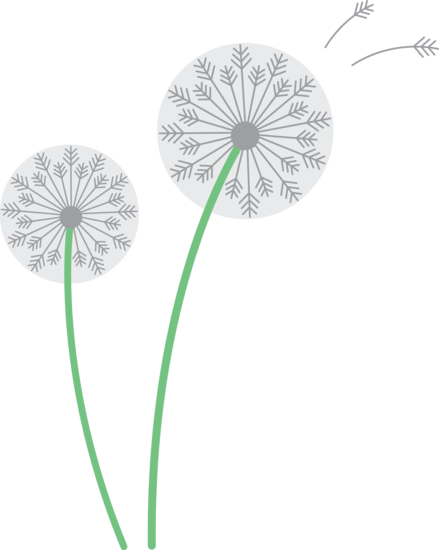Childhood Thought - Flower Oracles ~ Dandelion Folklore
The ox-eye daisy, the common daisy, the marguerite, the corn-flower, the dandelion, the rose, the pansy, the clover, and a score of other flowers and plants (to say nothing of bushes and trees) have their leaves and petals pulled off, their seeds counted, their fruit examined, their seed-tufts blown away, their markings and other peculiarities deciphered and interpreted to determine the fortune of little questioners, the character of the home they are to live in, the clothes they are to be married in, what they are to ride in, the profession they are to adopt, whether they are to marry, remain single, become monk or nun, whether they are to be drowned or hanged, rich or poor, honest or criminal, whether they are to go to hell, purgatory, or paradise.
The use of drawing straws or blades of grass from the hand to determine who is "it," or who shall begin the game, the blowing of the dandelion in seed, the counting of apple-pips, or the leaves on a twig, and a hundred other expedients belong to the same category. All these are oracles, whose priest and interpreter is the child; first, in "those sweet, childish days that were as long as twenty days are now," and then again when love rules the heart and the appeal to the arbitrament of nature--for not alone all mankind but all nature loves a lover--is made in deepest faith and confidence. In the golden age of childhood and in the springtime of love all nature is akin to man. The dandelion is especially favoured as an oracle of children, and of those who are but "children of a larger growth." To quote from Folkard (448. 309):--
"The dandelion is called the rustic oracle; its flowers always open about 5 A.M. and shut at 8 P.M., serving the shepherd for a clock. 'Leontodons unfold On the swart turf their ray-encircled gold, With Sol's expanding beam the flowers unclose, And rising Hesper lights them to repose.'--_Darwin_.
As the flower is the shepherd's clock, so are the feathery seedtufts his barometer, predicting calm or storm. These downy seedballs, which children blow off to find out the hour of day, serve for other oracular purposes. Are you separated from the object of your love? Carefully pluck one of the feathery heads; charge each of the little feathers composing it with a tender thought; turn towards the spot where the loved one dwells; blow, and the seed-ball will convey your message faithfully. Do you wish to know if that dear one is thinking of you? blow again; and if there be left upon the stalk a single aigrette, it is a proof you are not forgotten. Similarly, the dandelion is consulted as to whether the lover lives east, west, north, or south, and whether he is coming or not.
'Will he come? I pluck the flower leaves off, And, at each, cry yes, no, yes; I blow the down from the dry hawkweed, Once, twice—hah! I it flies amiss!'—Scott." Many interesting details about flower-oracles may be read in the pages of Friend (453) and Folkard (448) and in Mr. Dyer's chapters on Plants and the Ceremonial Use (435. 145-162), Children's Rhymes and Games (435. 232-242), etc.
Beasts, birds, and insects are also the child's oracles. Mr. Callaway tells us that among the Amazulu, when cattle are lost, and the boys see the bird called Isi pungumangati sitting on a tree, "they ask it where the cattle are, and go in the direction in which it points with its head." The insect known as the mantis, or "praying insect," is used for a similar purpose (417. 339). In the Sollinger forest (Germany), on St. Matthew's day, February 24, the following practice is in vogue: A girl takes a girl friend upon her back and carries her to the nearest sheep-pen, at the door of which both knock. If a lamb is the first to bleat, the future husbands of both girls will be young; if an old sheep bleats first, they will both marry old men. The Child and Childhood in Folk-Thought by Alexander Francis Chamberlain http://www.gutenberg.org/cache/epub/7966/pg7966.txt


 Previous
Previous